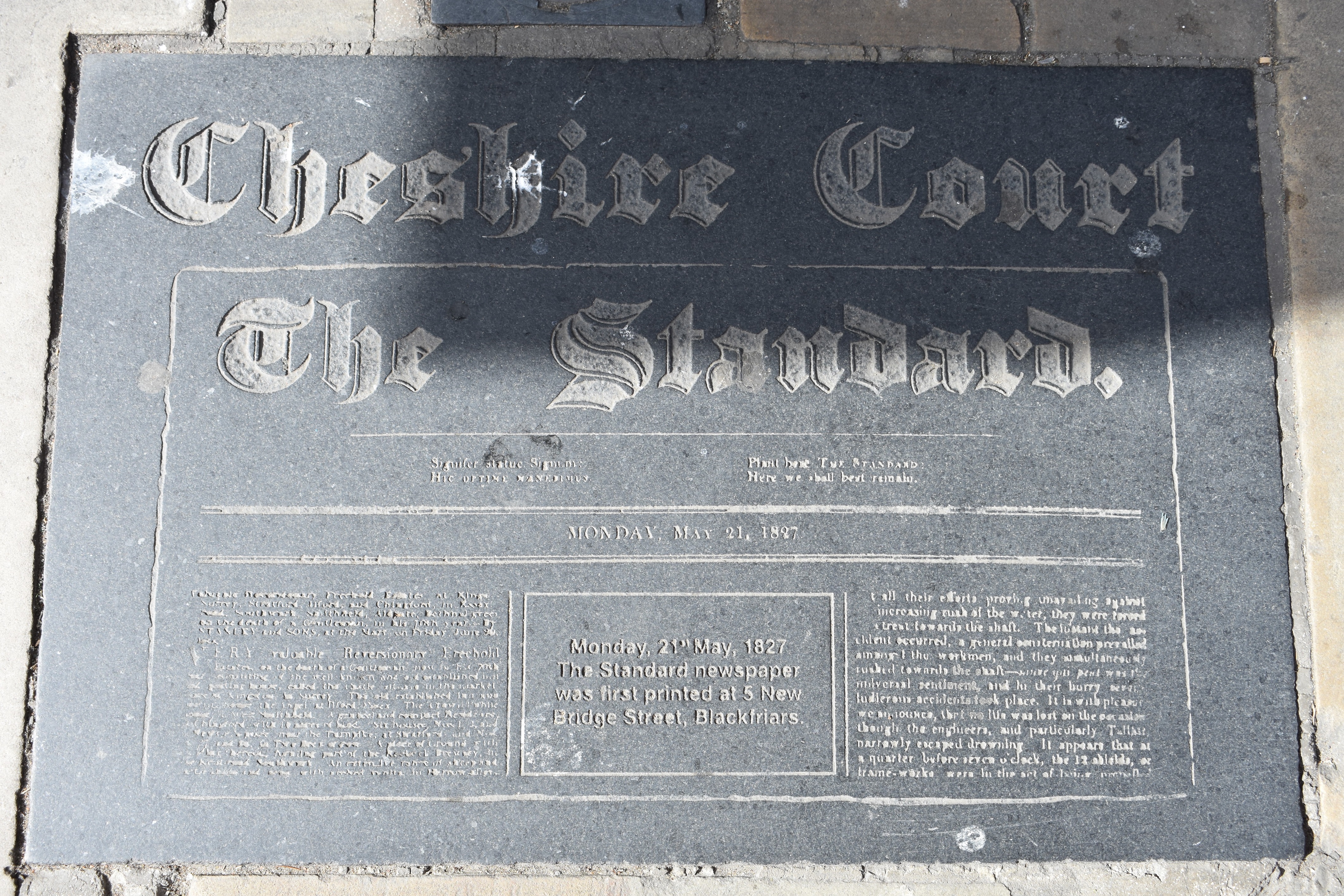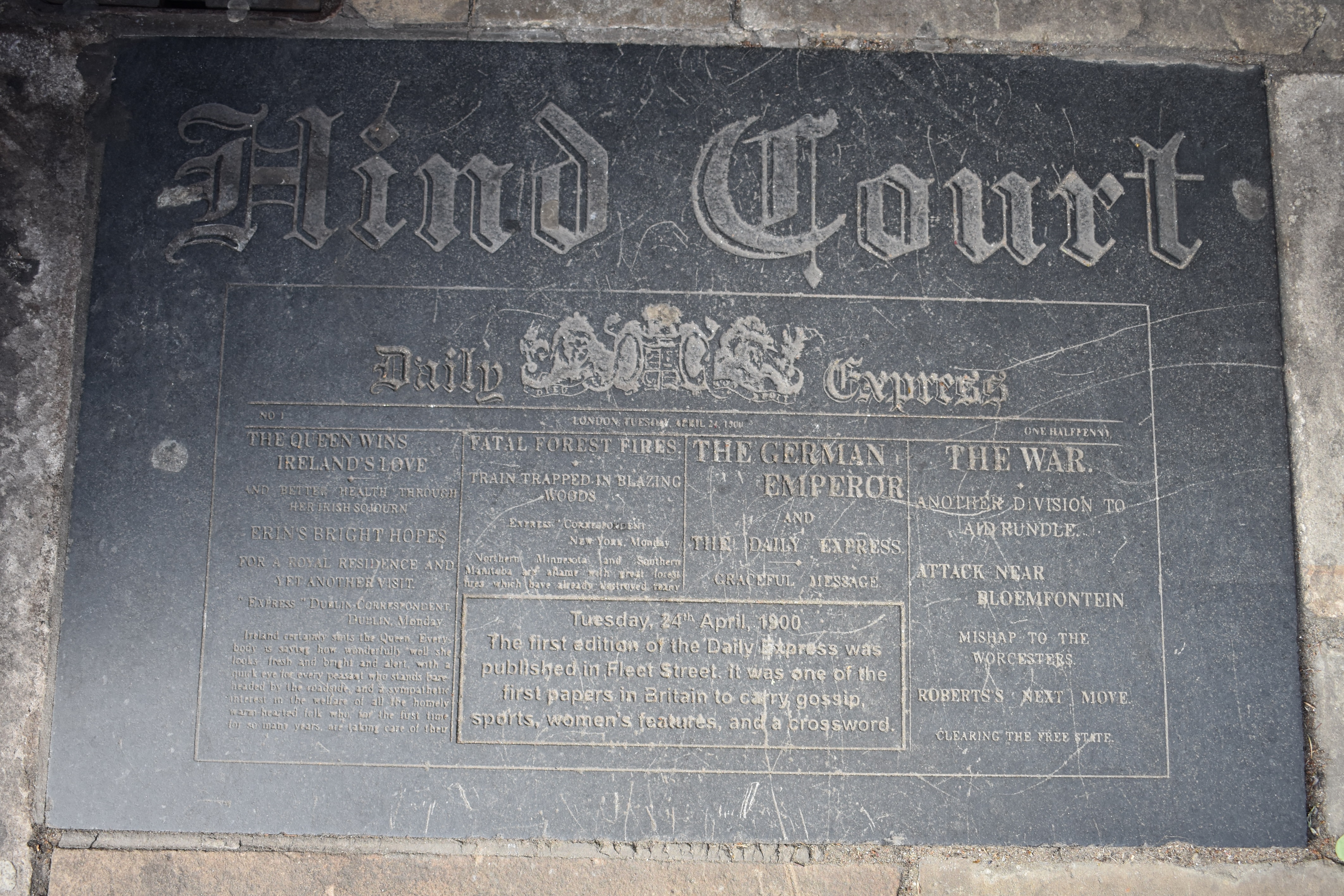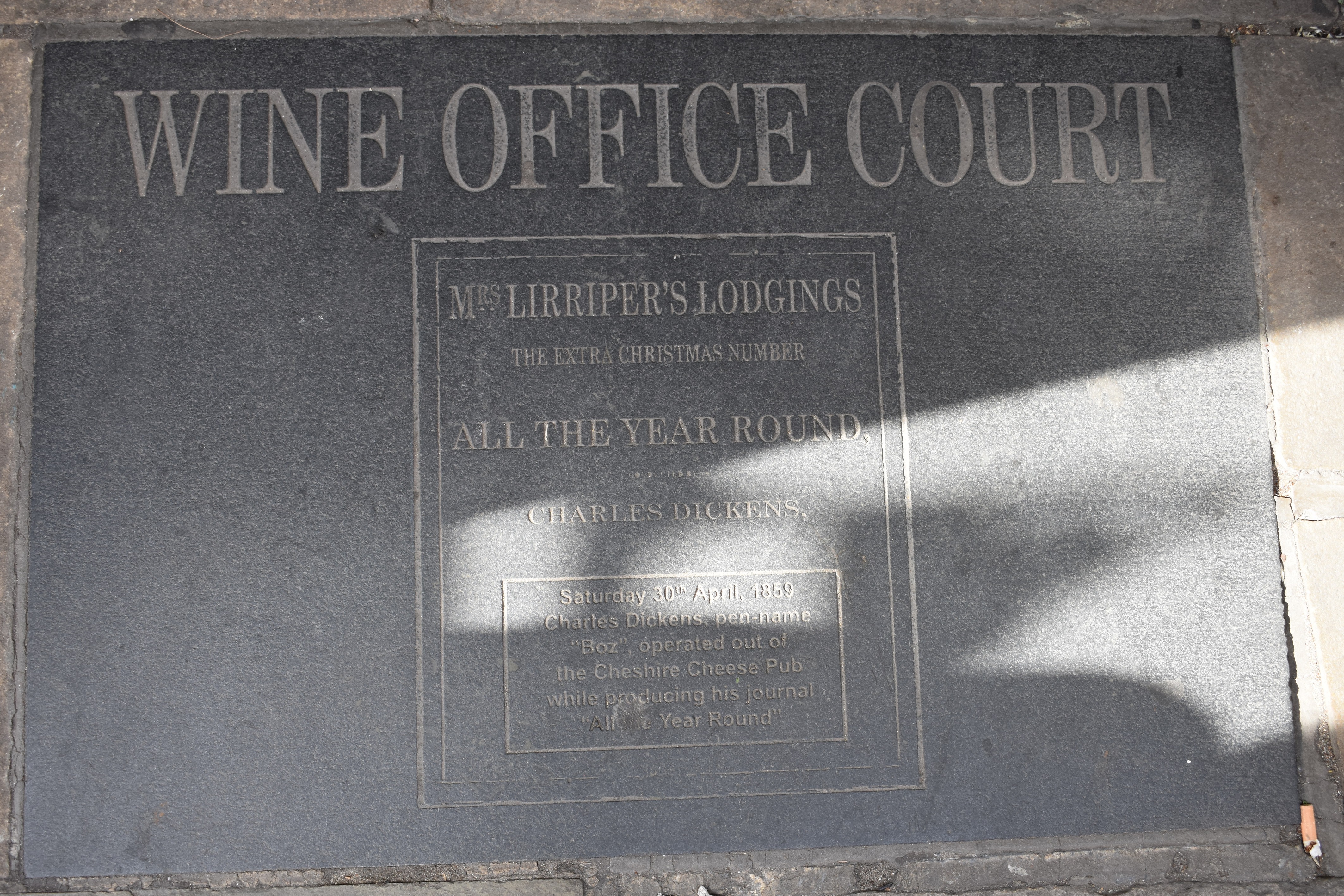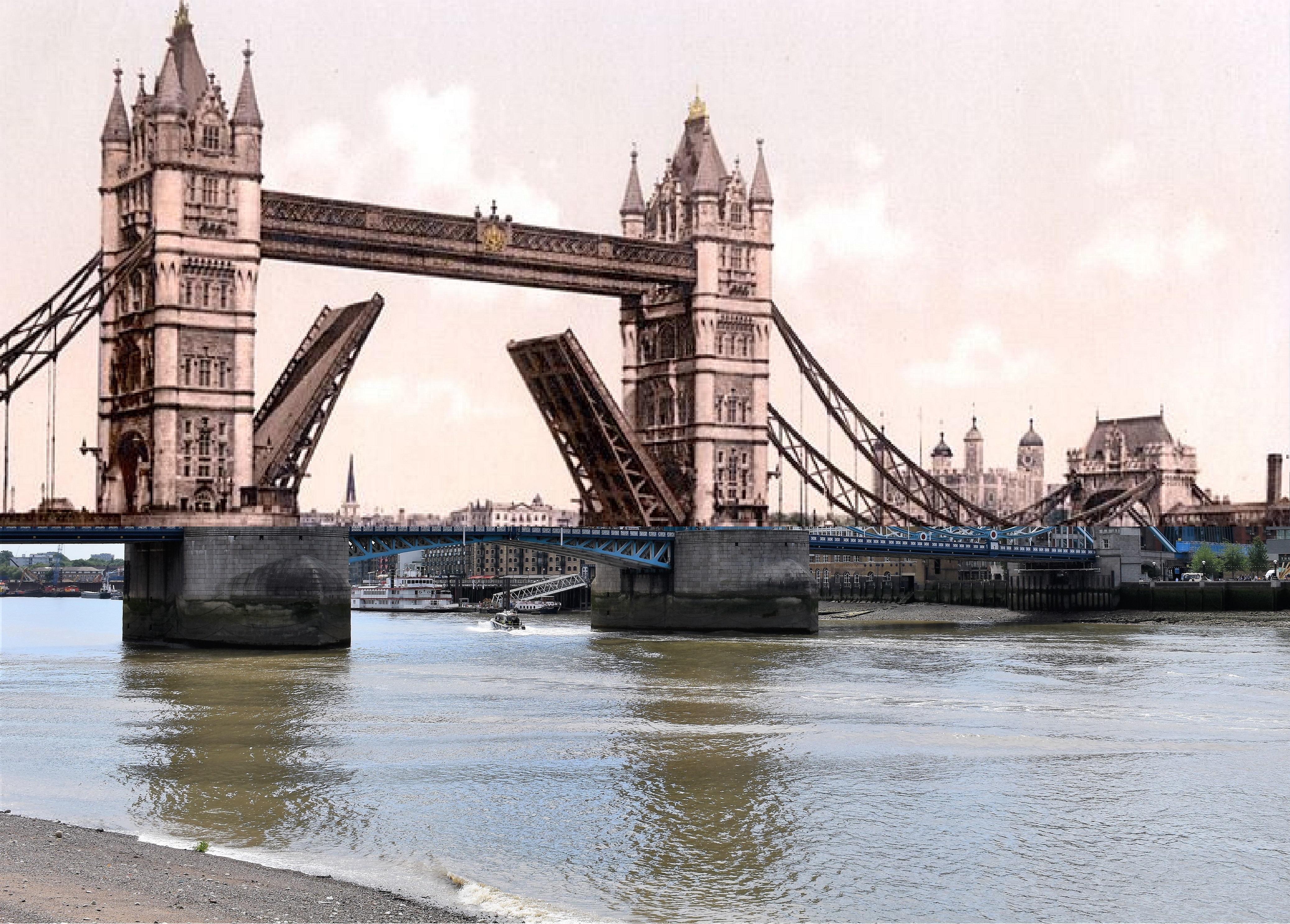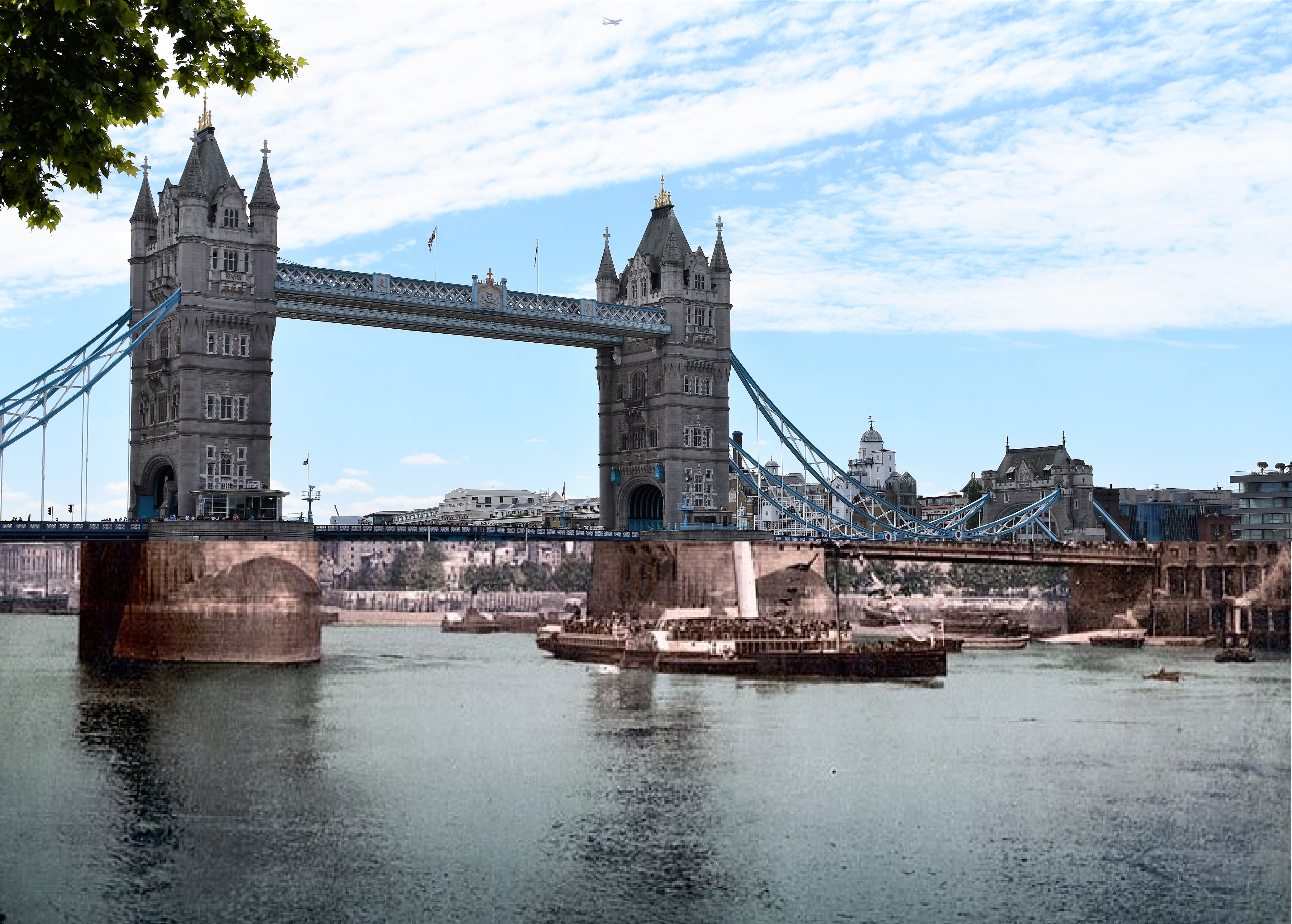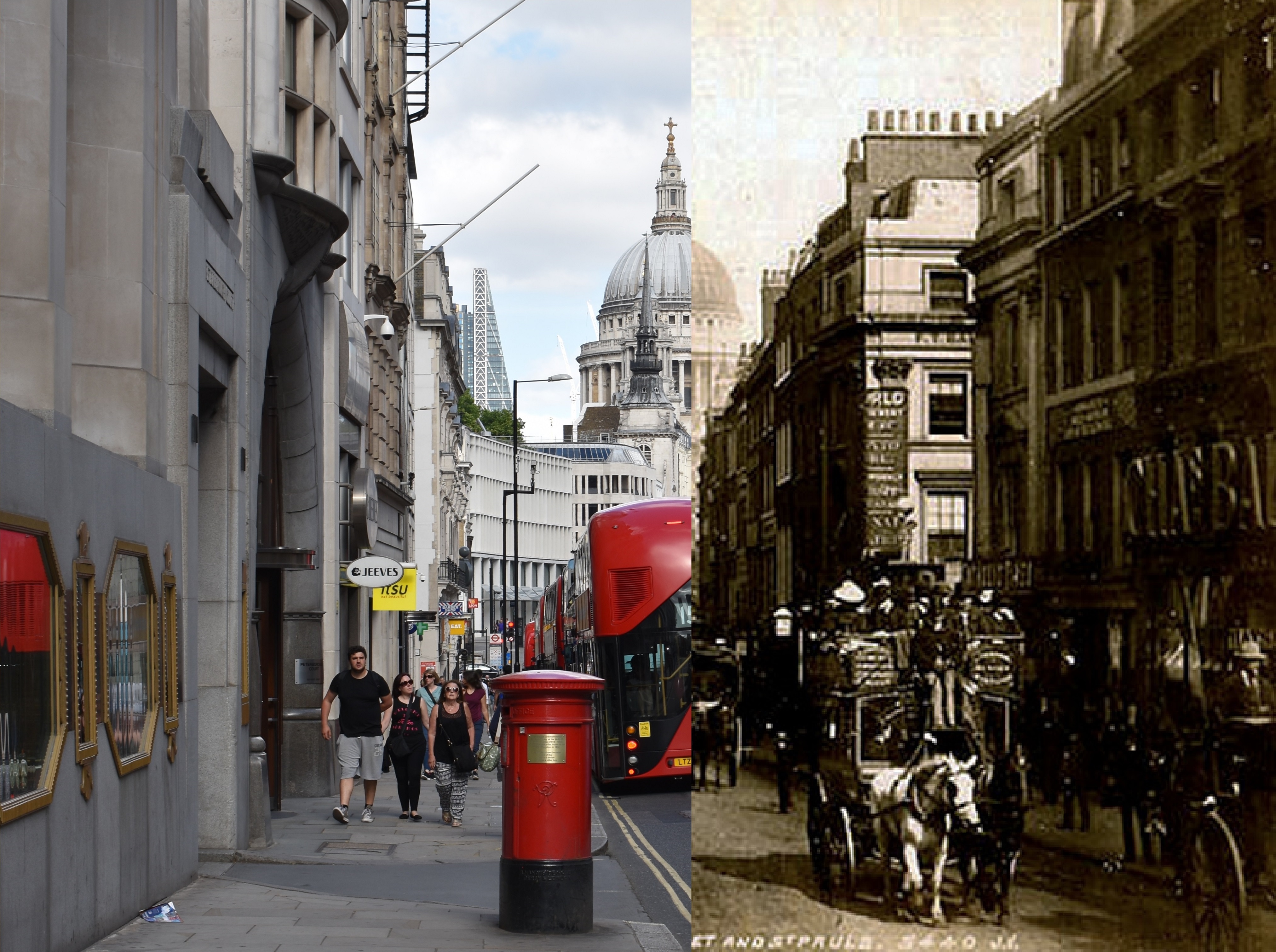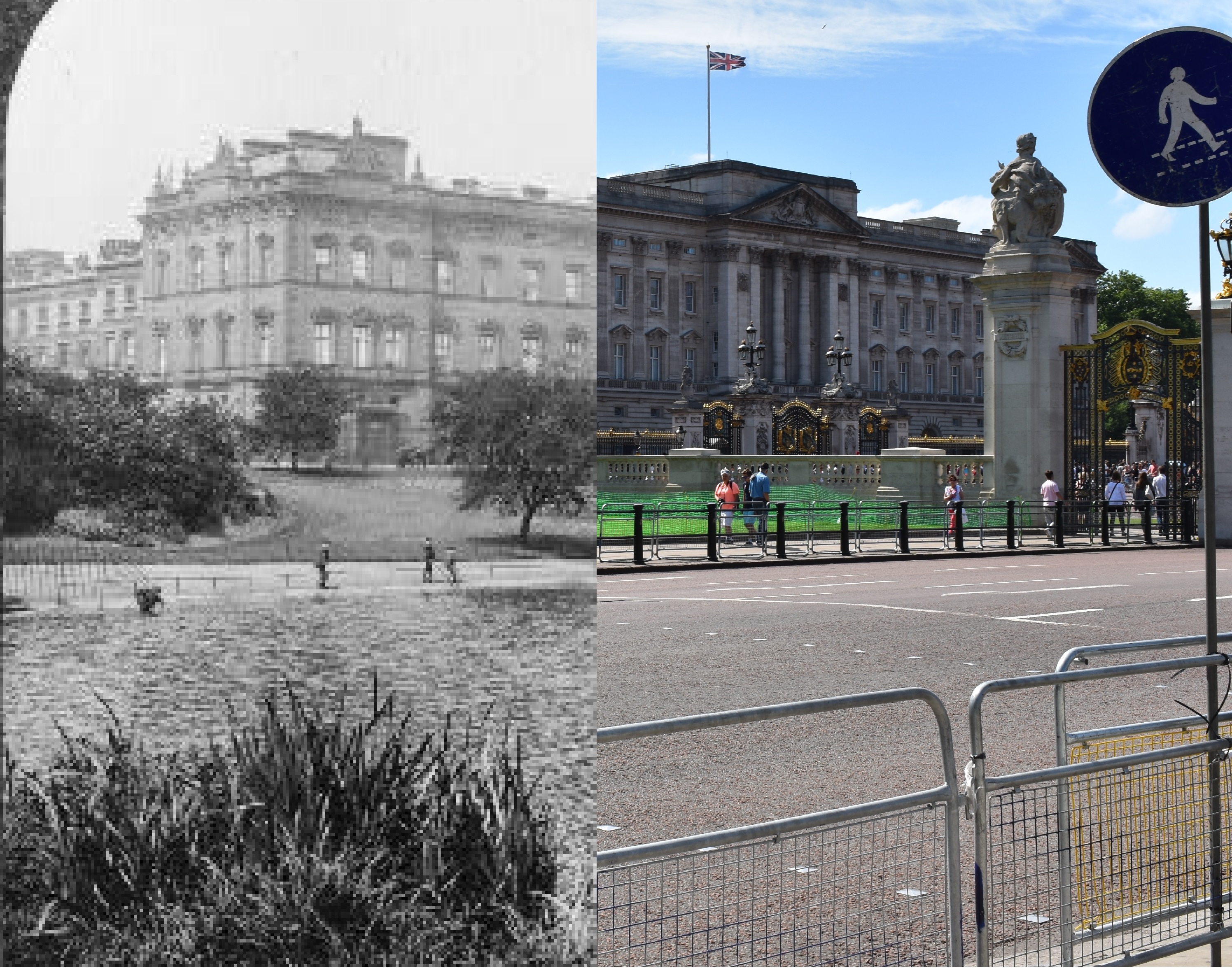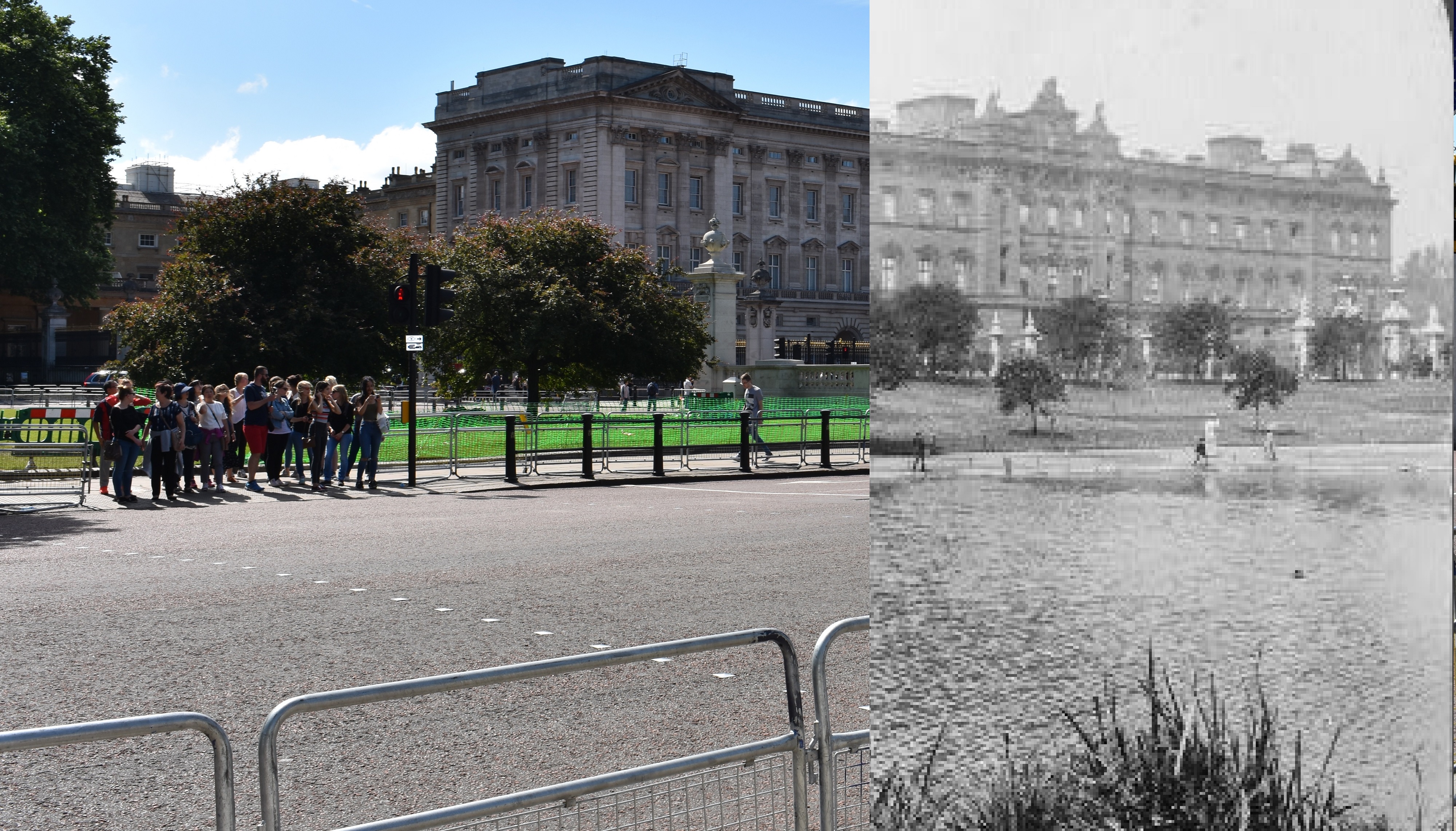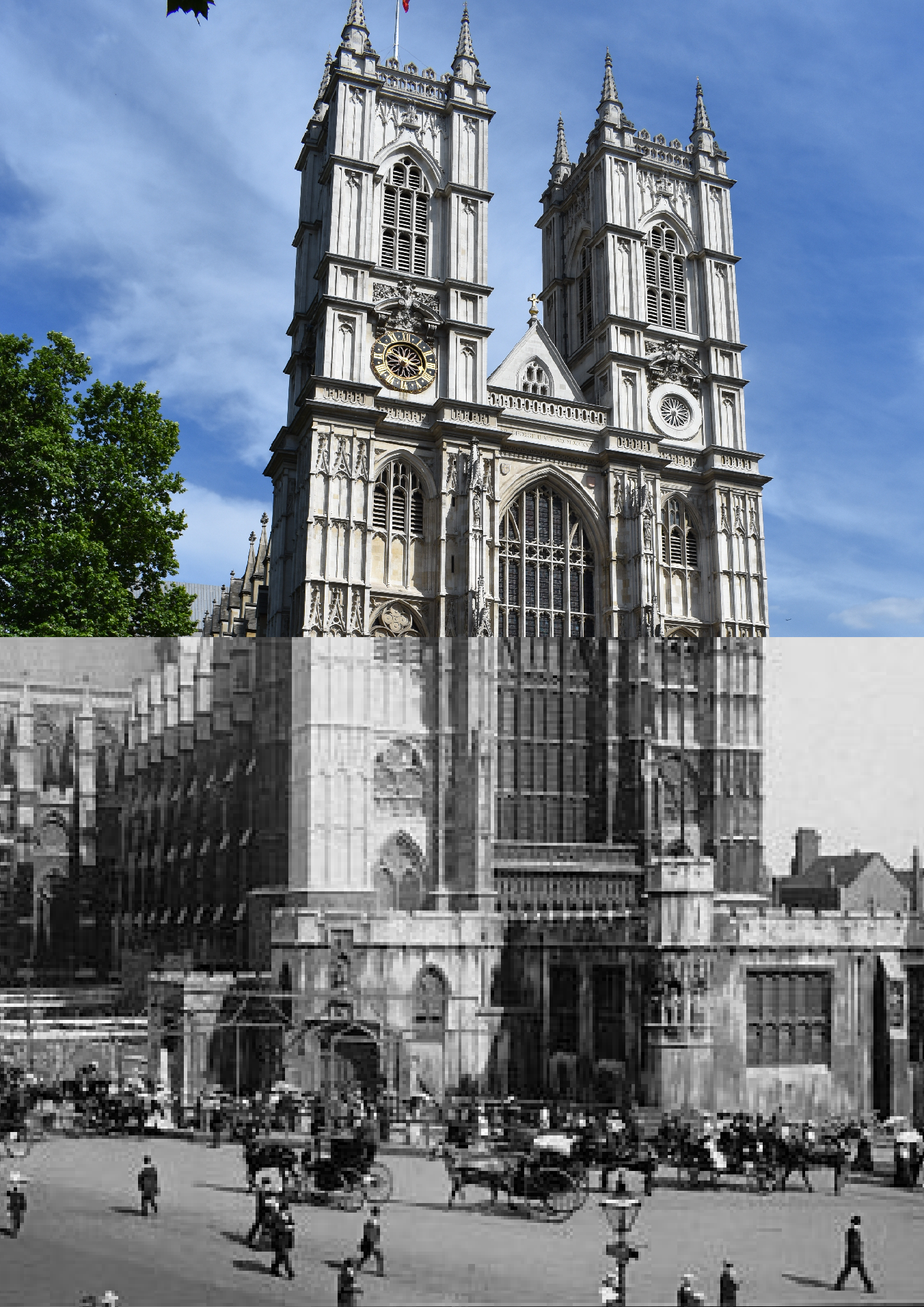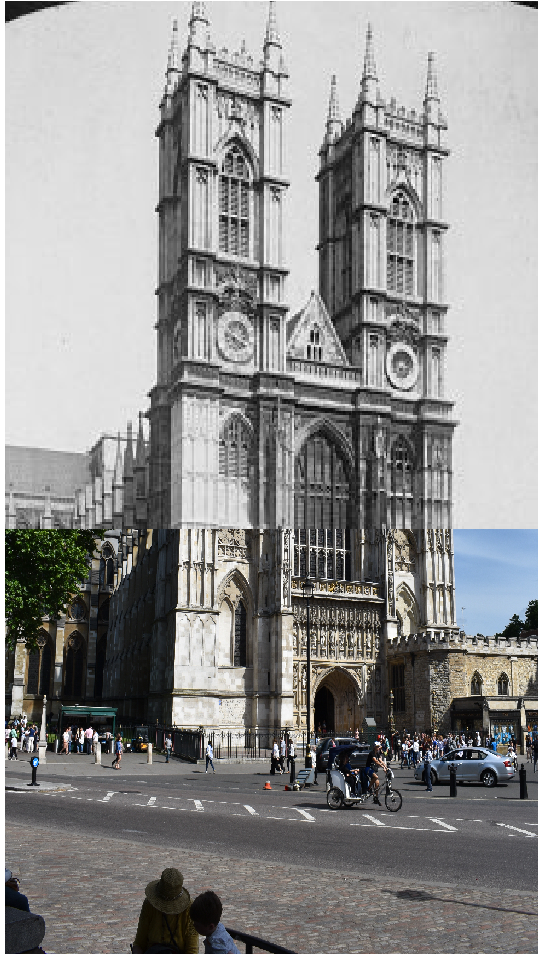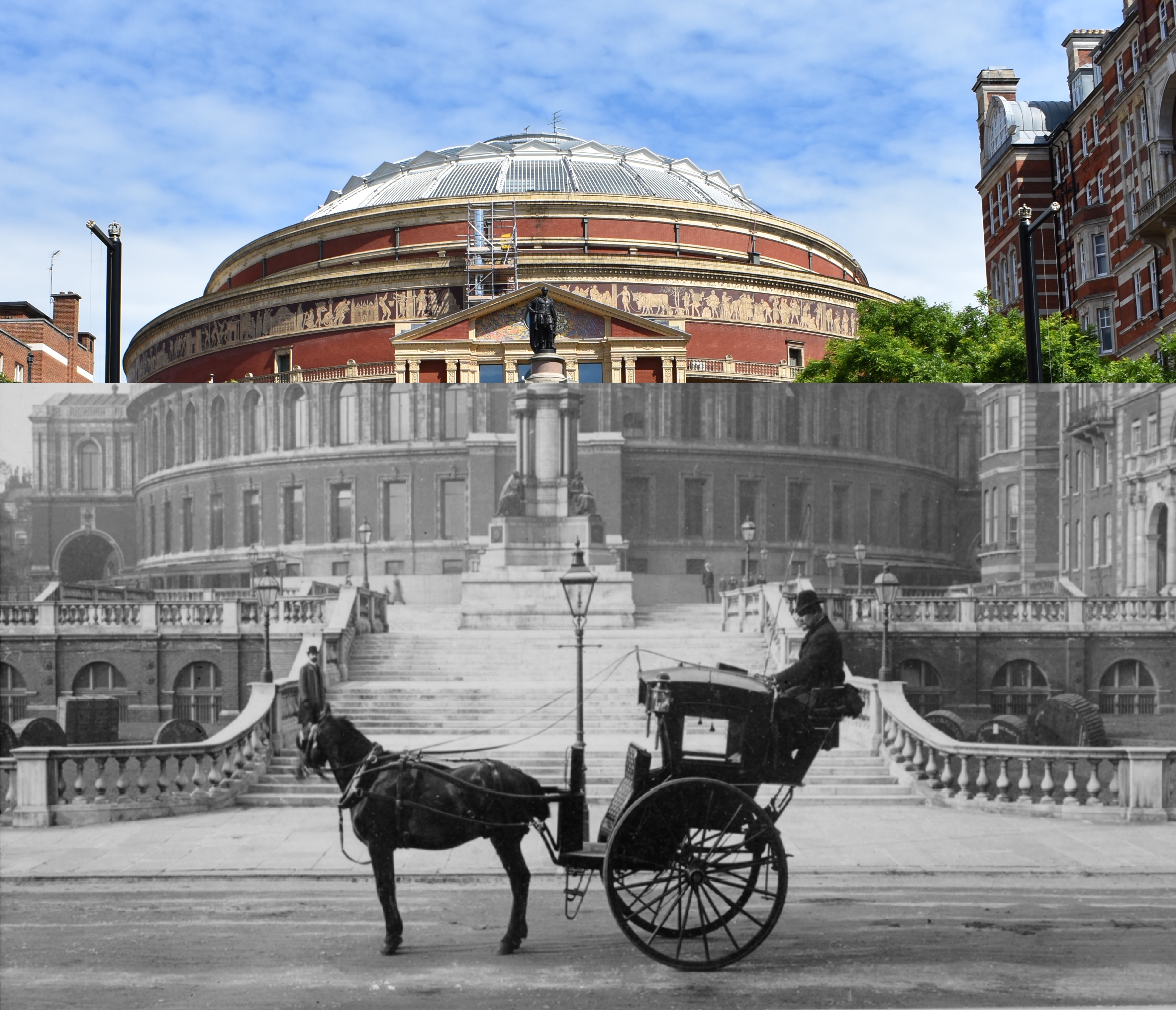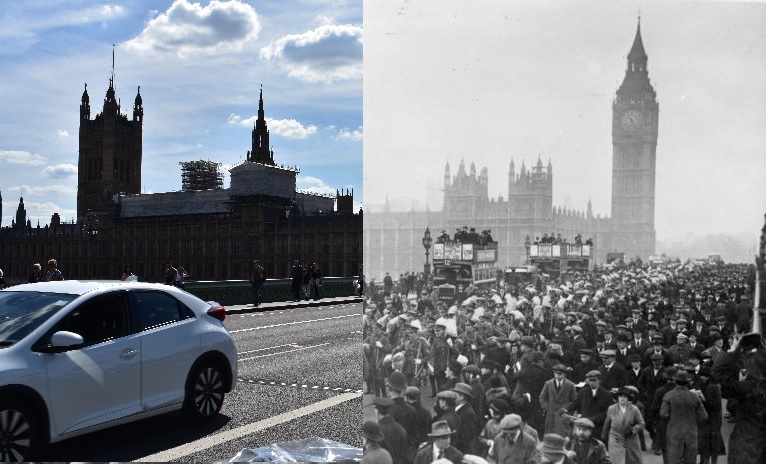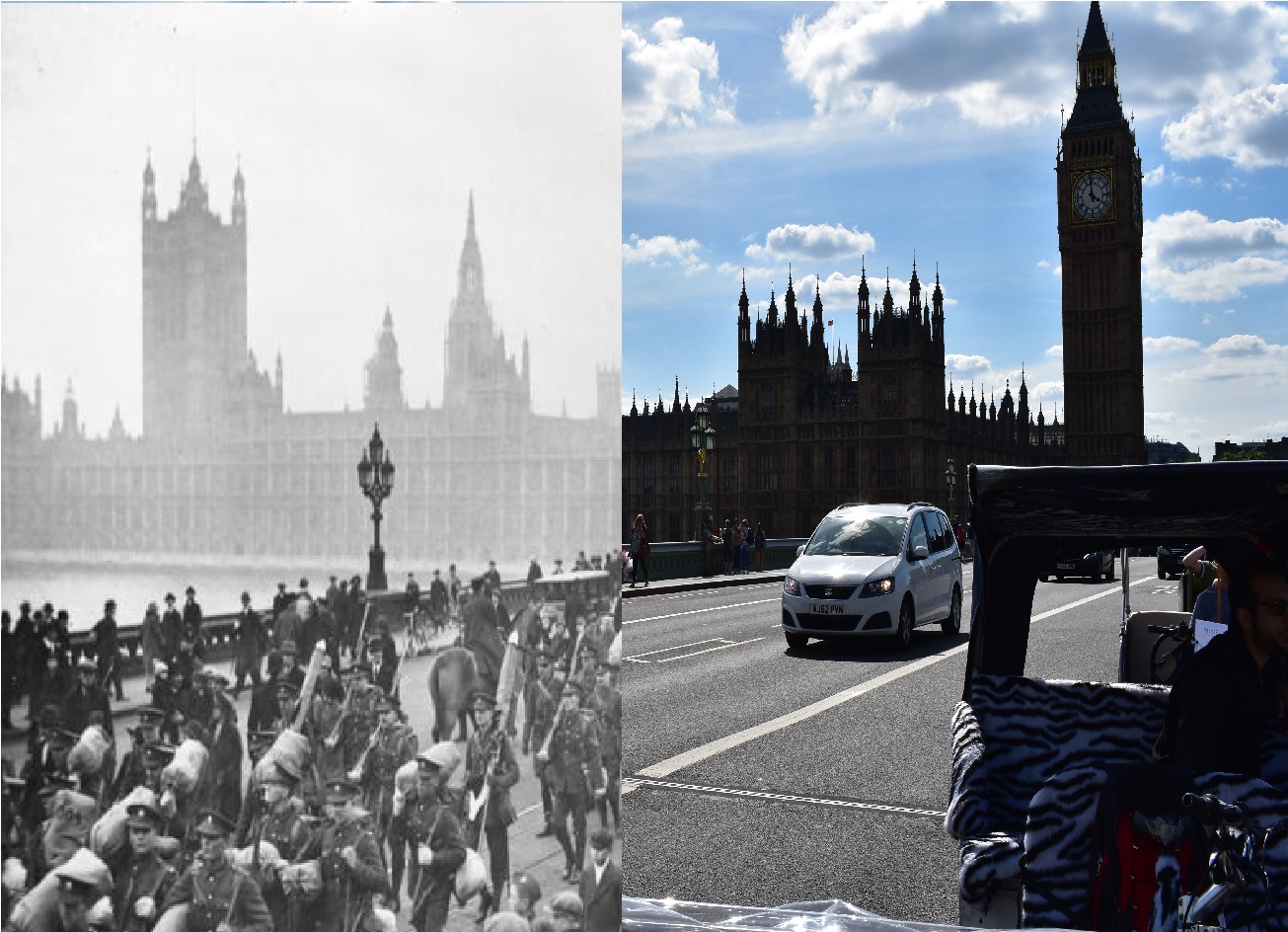Difference between revisions of "London: Past v. Present"
From Londonhua WIKI
(→Buckingham Palace) |
(→Tower Bridge) |
||
| Line 33: | Line 33: | ||
Public opinion of the bridge when it first opened was largely on the positive side. Most East End Londoners were glad to have another route across the Thames <ref name = "opening"/>. Yet in another article in ''The Westminster Gazette'' titled "Tower Bridge Not an Art Topic" critics briefly complain about the "ugly buildings" outnumbering the "beautiful" ones and the lack of "authoritative word" the Institute of British Architects had on the "ethics of Tower Bridge"<ref name = "art">[http://search.proquest.com.ezproxy.wpi.edu/news/docview/95186116/C04CE0F756184CE1PQ/14?accountid=29120], Tower Bridge Not an Art Topic. (1894, July 5). New York Times, p. 5. Retrieved from ProQuest Historical Newspapers database. </ref>. <br><br> | Public opinion of the bridge when it first opened was largely on the positive side. Most East End Londoners were glad to have another route across the Thames <ref name = "opening"/>. Yet in another article in ''The Westminster Gazette'' titled "Tower Bridge Not an Art Topic" critics briefly complain about the "ugly buildings" outnumbering the "beautiful" ones and the lack of "authoritative word" the Institute of British Architects had on the "ethics of Tower Bridge"<ref name = "art">[http://search.proquest.com.ezproxy.wpi.edu/news/docview/95186116/C04CE0F756184CE1PQ/14?accountid=29120], Tower Bridge Not an Art Topic. (1894, July 5). New York Times, p. 5. Retrieved from ProQuest Historical Newspapers database. </ref>. <br><br> | ||
| − | Presently, Tower Bridge is well known to Londoners and "representative of London in the eyes of the world"<ref name = "Portman"> [http://www.jstor.org.ezproxy.wpi.edu/stable/41613878], Portman, D. (2004). Henry Marc Brunel: Civil Engineer. Construction History, 20, 71-83. Retrieved from JSTOR </ref>. Derek Portman explored the history of the building of the bridge in a section of his article "Henry Marc Brunel: Civil Engineer". Portman explained how Tower Bridge was designed to appear as a "mediaeval drawbridge to the Tower of London" in order to better blend in with the surrounding area <ref name = "Portman"/>. This partially addresses the critics' claim in the previous paragraph regarding the art of Tower Bridge, nearly 130 years after they made the original complaints. London as a city has immense historic appeal, each new building could be seen as taking away from the historic look of the city. 100 years ago, Tower Bridge may have seemed too modern to the art critics, but presently it is deemed "the best of that period"<ref name = "Woodley">[http://www.jstor.org.ezproxy.wpi.edu/stable/pdf/1568740.pdf?refreqid=excelsior%3A0595208f2d38d59762198bc20f4ee164], Woodley, R. (2001). River Views: Transformations on the Thames. Architectural History, 44, 115-122. doi:10.2307/1568740 </ref>. Roger Woodley explains more recent architechtural feats, although "fine as they are individually", "appear simply confused" as riverside structures < | + | Presently, Tower Bridge is well known to Londoners and "representative of London in the eyes of the world"<ref name = "Portman"> [http://www.jstor.org.ezproxy.wpi.edu/stable/41613878], Portman, D. (2004). Henry Marc Brunel: Civil Engineer. Construction History, 20, 71-83. Retrieved from JSTOR </ref>. Derek Portman explored the history of the building of the bridge in a section of his article "Henry Marc Brunel: Civil Engineer". Portman explained how Tower Bridge was designed to appear as a "mediaeval drawbridge to the Tower of London" in order to better blend in with the surrounding area <ref name = "Portman"/>. This partially addresses the critics' claim in the previous paragraph regarding the art of Tower Bridge, nearly 130 years after they made the original complaints. London as a city has immense historic appeal, each new building could be seen as taking away from the historic look of the city. 100 years ago, Tower Bridge may have seemed too modern to the art critics, but presently it is deemed "the best of that period"<ref name = "Woodley">[http://www.jstor.org.ezproxy.wpi.edu/stable/pdf/1568740.pdf?refreqid=excelsior%3A0595208f2d38d59762198bc20f4ee164], Woodley, R. (2001). River Views: Transformations on the Thames. Architectural History, 44, 115-122. doi:10.2307/1568740 </ref>. Roger Woodley explains more recent architechtural feats, although "fine as they are individually", "appear simply confused" as riverside structures <ref name = "Woodley"/>. Current focus on Tower Bridge is minimal compared to some of the other structres London is well known for. Yet, it plays a significant role in examining the evolution of the city's architecture. |
<br><br> | <br><br> | ||
Revision as of 19:25, 22 June 2017
London: Past v. Present
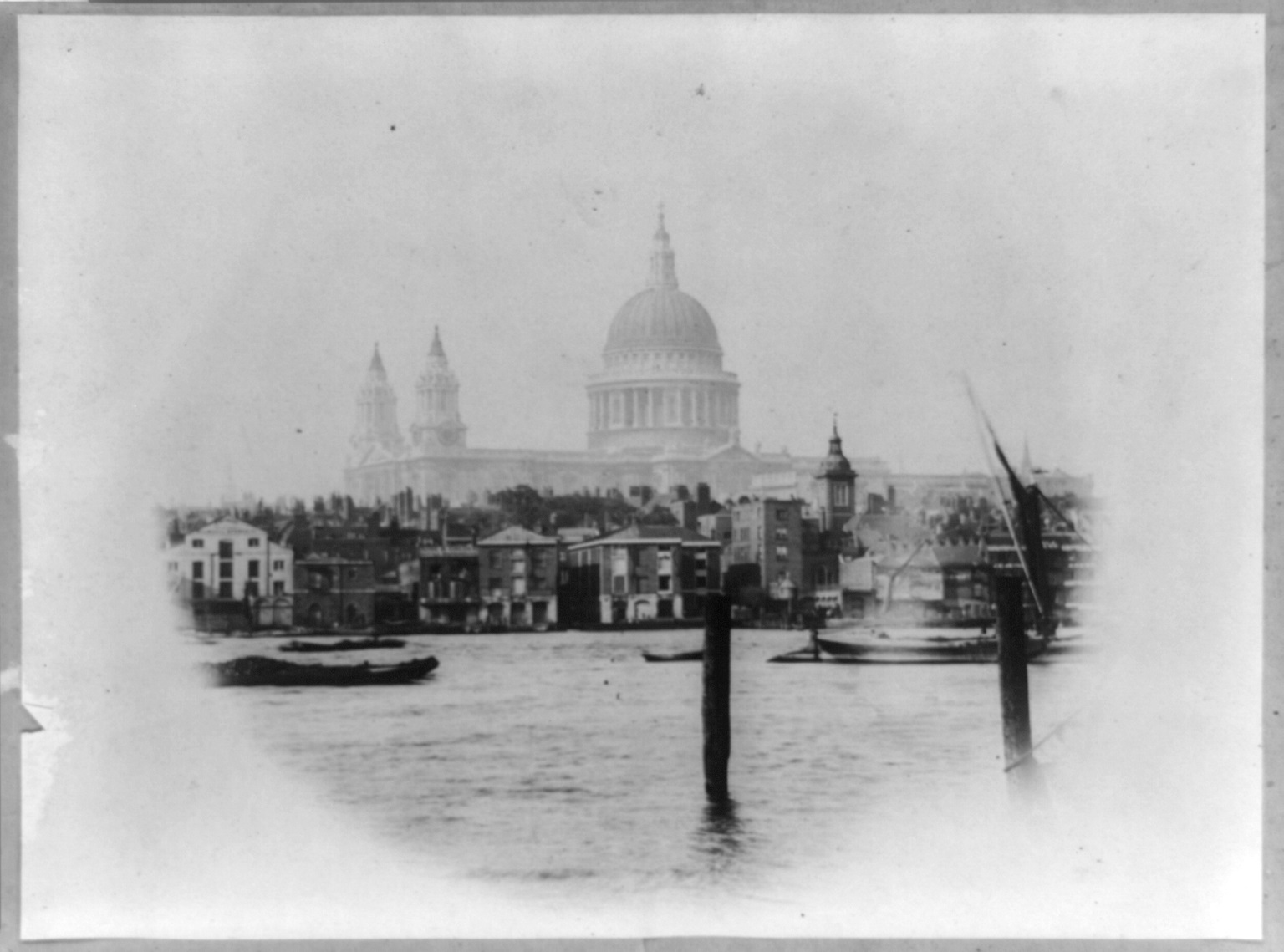 St. Paul's Cathedral circa 1852 [1] | |
| Photo Credit | Unknown |
|---|---|
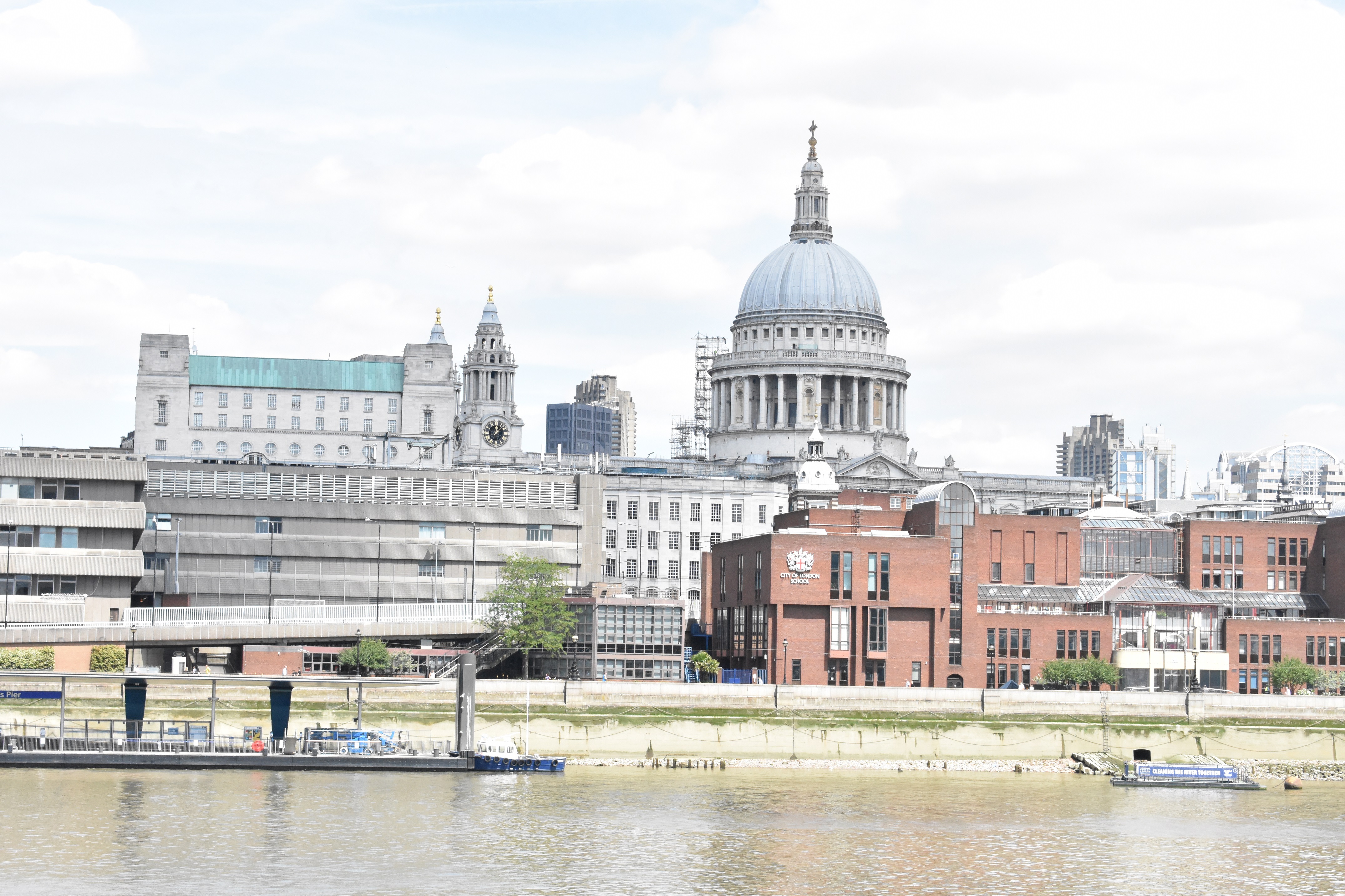 St. Paul's Cathedral 2017 | |
| Photo Credit | Trinity Tedtsen |
|---|---|
Contents
Abstract
Throughout this project, I wanted to explore what has changed about some of London's most famous structures and the surrounding areas. London is a city rich in history, my humanities focus, and I wanted to do something different with that. With that in mind, I decided to do a photography project focused on comparing London to what it looked like 100 years ago. In completing this milestone, I have discovered three main concepts. One, the buildings' physical appearances have changed very little. Two, the purpose of these structures have changed, some buildings more drastically than others. And three, technology is much more relied upon in our society today than it was 100 years ago.
Introduction
I suggest you save this section for last. Describe the essence of this project. Cover what the project is and who cares in the first two sentences. Then cover what others have done like it, how your project is different. Discuss the extent to which your strategy for completing this project was new to you, or an extension of previous HUA experiences.
As you continue to think about your project milestones, reread the "Goals" narrative on defining project milestones from the HU2900 syllabus. Remember: the idea is to have equip your milestone with a really solid background and then some sort of "thing that you do". You'll need to add in some narrative to describe why you did the "thing that you did", which you'd probably want to do anyway. You can make it easy for your advisors to give you a high grade by ensuring that your project milestone work reflects careful, considerate, and comprehensive thought and effort in terms of your background review, and insightful, cumulative, and methodical approaches toward the creative components of your project milestone deliverables.
Background
Tower Bridge
Tower Bridge is one of the newer structures London is famous for in the grand scheme of the city's historic appeal. Seeing as the bridge was built just over 120 years ago, it was not the focus of many historians' research. Tower Bridge, however, was the focal topic in newspaper articles of the day. An article about the opening of Tower Bridge claims the city had a "holiday spirit" about the opening and referred to the bridge as a "wonderful engineering feat"[2].
Public opinion of the bridge when it first opened was largely on the positive side. Most East End Londoners were glad to have another route across the Thames [2]. Yet in another article in The Westminster Gazette titled "Tower Bridge Not an Art Topic" critics briefly complain about the "ugly buildings" outnumbering the "beautiful" ones and the lack of "authoritative word" the Institute of British Architects had on the "ethics of Tower Bridge"[3].
Presently, Tower Bridge is well known to Londoners and "representative of London in the eyes of the world"[4]. Derek Portman explored the history of the building of the bridge in a section of his article "Henry Marc Brunel: Civil Engineer". Portman explained how Tower Bridge was designed to appear as a "mediaeval drawbridge to the Tower of London" in order to better blend in with the surrounding area [4]. This partially addresses the critics' claim in the previous paragraph regarding the art of Tower Bridge, nearly 130 years after they made the original complaints. London as a city has immense historic appeal, each new building could be seen as taking away from the historic look of the city. 100 years ago, Tower Bridge may have seemed too modern to the art critics, but presently it is deemed "the best of that period"[5]. Roger Woodley explains more recent architechtural feats, although "fine as they are individually", "appear simply confused" as riverside structures [5]. Current focus on Tower Bridge is minimal compared to some of the other structres London is well known for. Yet, it plays a significant role in examining the evolution of the city's architecture.
Fleet Street
Fleet Street has become metonymous with the newspaper industry since it's beginning over 500 years ago. Fleet Street, however, has changed drastically over the last hundred years. An article published by the Oxford University Press in 1913 talks about the use of "sob-stunts" by reporters on Fleet Street[6]. A "sob-stunt" utilizes an aspect of human sorrow and it "is the human element" that makes people want to read the paper [6]. This article, titled "Charity and Fleet Street", tells a specific story about a family's appeal to the charity of others. A mother wrote a letter to the editor of a newspaper requesting the following ad be placed in the next publication; "For sale, a beautiful blue-eyed boy aged 3, owing to his father being out of work and not being able to keep him"[6]. The article goes on to explain the aftermath of the article written about this family and the charity bestowed upon them. It shows the techniques used to entice an audience and how influential newspapers were during that time.
Newspapers, in printed form, are no longer everyone's first choice of where to get the news. People have cable news and radio to turn to when at home or in the car. So, in a society where Fleet Street is known for Sweeney Todd and the newspaper industry can be an afterthought, how is the culture surrounding Fleet Street remembered? Headlines today, whether it be newspaper or television, still attempt to capture the reader's eye by utilizing similar techniques. Today, people want to hear about celebrities lives, specifically the aspects they might be able to relate to. Journalists utilize this desire in their headlines.
Today, Fleet Street is the topic of research surrounding industrial London. People want to know more about the history behind it now that it is no longer itself. Plaques are present in the sidewalk in front of office buildings to remember the former newspaper prints and houses of well-known people[7]. Journalists recognize how important Fleet Street was to their industry. Richard O'Mara, a journalist for the Baltimore Sun, deemed Fleet Street "journalism's Valhalla", that is "a heaven you didn't have to die to get into" [7]. Although the printers are gone, the symbol Fleet Street stood for is the same, free press.
- Plaques on Fleet Street
Buckingham Palace
Scholarly articles about Buckingham Palace in the early 20th century focused on what was being kept in the Palace such as "The Royal Music Library at Buckingham Palace" in The Musical Times" and "Singing Class Circular and Lionel Cust's and Herbert Cook's "Notes on Pictures in the Royal Collections Article IX-'The Lovers,' at Buckingham Palace". It was not common to study the building at this time. When comparing two paintings from different exhibits, Cust and Cook commonly referred to specific paintings as "the Buckingham Palace picture"[8]. This shows the importance of the building the paintings were stored in. In "The Royal Music Library at Buckingham Palace" there is an excerpt from a letter written by Mendelssohn regarding his trip to Buckingham Palace. Mendelssohn says he wished to be able to "boast about it" while continuing on his journey and referred to the grand organ as "a very pretty feature in the room"[9]. These articles, albeit indirectly, show the grandeur of the Palace and how well revered it was.
Buckingham Palace has become, with the growth of the industry, one fo London's top tourist attractions. Yet, a similar theme is followed in some present day articles about the structure. This includes Christopher Maxwell's "Chinoiserie at Buckingham Palace in the Nineteenth Century". Maxwell, however, includes introductory paragraphs about the history of the Palace, something articles from the past neglected. He mentions Queen Victoria being the first monarch to live in the Palace and says the "interiors stretched the classical tradition to its limits", referring to the elegantly decorated designs by John Nash[10]. Although some research is still done regarding art and music inside the palace, the field has widened a bit to include film and architechture. An article in the journal Film Comment describes some of Elizabeth II's history in regards to the film '"The Queen". The film and article discuss the untraditional burial of Princess Diana, while mentioning how Buckingham Palace was used in the cinemetography of the film[11]. It is also safe to say Buckingham Palace is still a staple of London with those who visit saying they "felt very privileged" to be at the Palace in the Queen's presence[12].
Westminster Abbey
Presently, Westminster Abbey is one of the most renowned churches in England, if not the world. It is a huge tourist attraction and the subject of many historical inquiries. But, what was it like 100 years ago? Were people as interested in the history of the building as they are now? Well, in 1907, a music journal titled The Music Times published four issues of their journal each containing an article about music in the Abbey[13]. These articles show how esteemed the Abbey was during the early 20th century. The author of the articles states "of all the beautiful cathedrals and abbeys in this fair land of ours none can compare with the stately fane of Westminster"[13]. It is not surprising that Westminster Abbey was a focal point of research 100 years ago seeing as the church was first built over 900 years ago. It is surprising, however, how infatuated with the Abbey Crotchet seemed to be, saying the church built on the command of Edward the Confessor was "the first Abbey worthy of the name of Westminster"[13]. It is clear that Westminster Abbey is still a well-respected venue, the emphasis being on still. Crotchet was not the only one who believed the Abbey to be a place worthy of admiration. An article in The British Medical Journal written by a graduate of Edinburgh in 1871 used the terms "venerable", "illustrious", and 'honoured" to describe the church and the people buried there in a request for a bust of Lord Lister to be present in the Abbey[14].
Popular opinion of the Abbey in the early 1900s is massivley on the positive side and it doesn't seem to have changed much. Westminster is still the focus of many researchers in fields of history, art, music and many more. In his book about Edward the Confessor, Eric Fernie dedicates an entire chapter to Westminster Abbey saying it "has a good claim to being the most important building project of his reign"[15]. Fernie goes on to explain the architecture and construction of the building before it was knocked down in 1245 for Henry III's new church[15]. Other historians have examined different aspects of the church's history. Ian Atherton examined the connection cathedrals have to the reformation in an article in The Historic Journal [16]. He describes the multiple viewpoints historians have about the role of cathedrals in post-reformationn England and why so many focus on Westminster Abbey. Another aspect of modern studies about the Abbey revolve around art and filmography. The journal article "Using Popular Film in the Architectural History Classroom", Rumiko Handa describes the increase in the use of actual buildings for film and describes Westminste Abbey as an "already popular" site[17] Handa goes on to explain the differences between Westminster and York Minster, the church used to film the coronation scene in Elizabeth [17]. One difference she mentions is the triforiums in the two buildings. Westminster has a
"strongly expressed threestory elevation" possibly for "sightseers on grand occasions", but York Minster's triforium is "tucked under the roof and unlit"[17]. These differences show how truly grand Westminster Abbey is and represent the reasons for its being built. Westminster Abbey is, has, and seemingly always will be, a grand structure in London, studied by any and respected by all.
Royal Albert Hall
Royal Albert Hall serves the same purpose today as it did when it was built, a place for the arts. The Hall was built for events to take place in, events like balls. On June 6, 1912, there was a ball at Royal Albert Hall called "the Dance of a Hundred Years Ago"[18]. The dance was used to bring together people from "all [of] society" to celebrate "their ancestors of a century ago"[18]. Although the arts are meant to bring people together, that did not stop Royal Albert Hall from being used as a place of political action. In February of 1912, the Chancellor of the Exchequer led a meeting of "the National Union of Woman's Suffrage Societies" to discuss an amendment regarding women's rights[19].
Presently, Royal Albert Hall is used for similar types of events. In 2012, a column in the New York Times talked about the taping of the 25th anniversary of Phantom of the Opera, "Broadway's longest-running show" as of 2006, at Royal Albert Hall[20]. Having such a well revered musical filmed at Royal Albert Hall shows how prestigious the Hall is. Political events also still take place at the Hall- sort of. In 2010, Mikhail Gorbachev held a benefit concert for his foundation for child health[21]. Although a benefit concert is not a political event in and of itself, it serves a political purpose because it is notably not taking place in Moscow[21]. Any changes regarding Royal Albert Hall have been minuscule compared to changes that have happened at some other famous London structures.
The Houses of Parliament and Big Ben
In 1894, Edwin Chubb published an article for in Journal of Education describing his experiences with the new Palace of Westminster. He describes the building as "magnificent" and "as familiar ... as the Statue of Liberty"[22]. Clearly, people thought the Houses of Parliament to be a symbol representative of their country. Chubb later writes about what it was like to sit in while the Houses were in session. In order to see their leaders in action, citizens must obtain passes granting them access to the rooms[22]. After Chubb got his pass, he had to wait 2 hours for a seat inside the room[22]. This shows the immense interest people had on what goes on inside the Houses. People wanted to see William Ewart Gladstone- the prime minister at the time the article was written- in action. The structure was not, however, only popular because of the politics that went on inside. The Music Times published an article in 1910 about bells, including Big Ben, the bell in the famous clock tower on the north end of the palace. The article regards a lecturer's criticism of the bell stating the "casting is not as good as it should be" and the crack, and subsequent holes, "injures the tone" of the bell[23]. The study of the palace and accompaning clock tower do not end with "The Music Ttimes, but continue well into modern society.
Topics of interest to present day historians include how the architecture of the palace was influenced by historical events, what purpose monuments such as the palace and Big Ben serve, and the art on the walls within the Houses of Parliament. Sean Sawyer, an architectural historian, explored the relationship between historical events and the changing architecture of the Palace of Westminster in his article "Delusions of National Grandeur: Reflections on the Intersection of Architecture and History at the Palace of Westminster, 1789-1834" for the Transactions of the Royal Historical Society journal in 2003. Sawyer talks about the "urban renweal" of the palace between 1784 and 1834 that allowed the structure "to serve the institutions of national law and government"[24]. Sawyer and Chubb have both deemed the building to be modern for it's time period with Sawyer elaborating on the political relationships involved in choosing the new design. According to Sawyer, George III "approved of" John Soane's plans for a "grand royal entrance" but was won over by James Wyatt's "courtly graces"[24]. Sawyer's article delves into the history behind the making of the palace as well as the architectural points other historians overlook. Another new interpretations of monuments comes from Lubaina Himid in a book titled Black Knowledges/Black Struggles: Essays in Critical Epistemology. In a chapter focusing on the purpose of monuments in relation to culture. She mentions many London monuments, but specifically says Westminster has been at the "center of political and religious power in England for 1,000 years"[25] She also mention the Oliver Cromwell statue and believes it necessary to mention "the memorial garden for the African governor of the Roman province of Britannia, Quintus Lollius Urbicus, has never been replaced since it was destroyed during the Second World War" [25]. Himid's analysis of monuments not only in London explores the relevant issues of race and gender in today's society. Although the subject of research from modern historians has not changed, their topics have adapted to fit with modern culture and societal problems.
Section 2: Deliverable
In this section, provide your contribution, creative element, assessment, or observation with regard to your background research. This could be a new derivative work based on previous research, or some parallel to other events. In this section, describe the relationship between your background review and your deliverable; make the connection between the two clear.
Tower Bridge
The past picture of Tower Bridge is from between 1890 and 1905 from an unknown source. Although the bridge is physically the same in both pictures, the comparison shows two major differences. The first of these is shown by the bridge being raised in the past image and lowered in the present day image. In its opening year, Tower Bridge was raised an average of 17 times a day, presently it is raised twice a day on average. The second is how differently the walkway above the bridge is used. When built, the walkway was for pedestrians to use while the bridge was raised. Presently, the walkway is a sort of museum for tourists to experience. The walkway is fitted with a glass walkway, allowing those inside to look down at the bridge.
[26]
Fleet Street
The past photo of Fleet Street was taken by James Valentine circa 1890. The image is taken looking east on Fleet Street toward St. Paul's Cathedral. Compared to the present day image, Fleet Street seems much more pedestrian friendly in 1890. Today, buses crowd the streets as people are on their way to work. This is not to say crowds of pedestrians are never found on Fleet Street anymore, but it is representative of how the street has changed as described in the background. Fleet Street is no longer a hub for daily news. It is no longer common to see people crowded together near shop doors trying to hear the news. Our culture has changed. Technology has helped it adapt. Fleet Street is one way of showing that massive change.
[27]
Buckingham Palace
The past photo of Buckingham Palace was taken by H.C. White Co. Although the building has not changed much since this photo was taken around 1902, the areas surrounding the palace have changed drastically. Cleary the roads and the gate in the present day photo are new, but the entire landscape has been altered to fit around the statue of Queen Victoria which was first unveiled in 1911. The Queen's Gardens surrounding the memorial are included in the physical alterations to the grounds in front of the palace. The next clear difference shown is the number of pedestrians visiting the palace. The tourist industry in London is huge, and it is shown in the present day image. Finally, it is clear that technology has advanced and ingrained itself in our everyday lives. This is clearly shown by the cameras and phones in the hands of the pedestrians and is indicated by the pedestrian crossing sign where there are stop lights.
[28]
Westminster Abbey
The past photo of Westminster Abbey was supplied by H.C. White Co. and is from ca.1909. Although lacking in physical differences, the past and present photos of Westminster Abbey show how technology is essential to our everyday activities. This is shown by the tourists taking pictures and the vehicles in the foreground. In the photo from 1909, th4e pedestrians are simply traveling. They aren't relying on technology to get them where they need to go nor are they stopping to take selfies in front of the church. This is another example of how present day culture has adapted to rely upon technology.
[29]
Royal Albert Hall
The past picture of Royal Albert Hall was taken ca. 1904 and published by Keystone View Company. Royal Albert Hall has been a staple of the arts in London for as long as it has been built, increasing in popularity after the acoustics were fixed in the 60s. Neither the physical appearance nor the function has truly changed since the hall's opening. There is construction going on on the opposite side of the Hall from where these two images were taken to expand space for artists, crews, and promoters. The biggest change in Royal
Albert Hall is the year it opened it held 36 events, and today it hosts almost 400 events a year.
[30]
The Houses of Parliament and Big Ben
Taken by an unknown photographer in 1932, the past photo shows British soldiers gathering on Westminster Bridge for transportation to Shanghai. The comparison of photos speaks to a different cultural difference than the majority of the other comparisons. In the past photo, pedestrians are gathered on the bridge to watch soldiers cross the bridge on their way to battle. Today, pedestrians gather to watch the Changin of the Gaurd at Buckingham Palace or Windsor Castle. In the present day photo, people are simply living their everyday lives. Some are tourists taking pictures while on vacation. Some are Londoners trying to get to work. Some are long term students enjoying the city. Whatever the case, the people on the bridge in the present day photo are not worried about the same things as the people on the bridge in the past photo.
[31]
Conclusion
Focusing on famous buildings in London was not a new idea for a project. Hundreds of people have probably done projects focusing on one or more of the same buildings I chose. However, comparing those buildings to what they looked like 100 years ago is a different spin on the idea. It would be interesting to do this same project with different structures in London, focusing more on museums and what the buildings used to be for.
When I first had the idea for this project, I didn't know what I was going to find out. After comparing the present day photos to those of the past, I still wasn't sure. Most of them looked about the same. However, after completing the background research, it was clear although the buildings have not changed themselves, their purposes have changed and adapted to fit with our changing culture. Technology is one factor we have to deal with presently in very different ways than we would've had to in the past. That seems obvious. Technology is so much more advanced today. However, technological advances were revolutionary 100 years ago. Things like the vacuum cleaner and air conditioning were groundbreaking ideas. Yet, those groundbreaking ideas didn't affect society the way technology affects society today. Although everyone might have run out to buy a vacuum, they did not depend on the vacuum in their everyday lives. People didn't rely on technology back then as much as people do today. The way our culture builds itself around technology would be an interesting topic to pursue further.
References
- ↑ [1], (ca. 1852) [St. Paul's Cathedral in London, England, viewed from across the river]. , ca. 1852. [Between and Ca. 1860] [Photograph] Retrieved from the Library of Congress.
- ↑ 2.0 2.1 [2], THE TOWER BRIDGE OPENED: LONDON'S NEW HIGHWAY ACROSS THE THAMES. (1894, July 1). New York Times, p. 5. Retrieved from ProQuest Historical Newspapers database.
- ↑ [3], Tower Bridge Not an Art Topic. (1894, July 5). New York Times, p. 5. Retrieved from ProQuest Historical Newspapers database.
- ↑ 4.0 4.1 [4], Portman, D. (2004). Henry Marc Brunel: Civil Engineer. Construction History, 20, 71-83. Retrieved from JSTOR
- ↑ 5.0 5.1 [5], Woodley, R. (2001). River Views: Transformations on the Thames. Architectural History, 44, 115-122. doi:10.2307/1568740
- ↑ 6.0 6.1 6.2 [6], Charity and Fleet Street. (1913). Charity Organisation Review, 33(197), new series, 240-244. Retrieved from JSTOR
- ↑ 7.0 7.1 [O'Mara, R. (2003). London and Boswell. The Sewanee Review, 111(4), 595-602. Retrieved from http://www.jstor.org.ezproxy.wpi.edu/stable/27549441], O'Mara, R. (2003). London and Boswell. The Sewanee Review, 111(4), 595-602. Retrieved from JSTOR
- ↑ [7], Cust, L., & Cook, H. (1906). Notes on Pictures in the Royal Collections Article IX-'The Lovers,' at Buckingham Palace. The Burlington Magazine for Connoisseurs, 9(38), 71-79. Retrieved from JSTOR
- ↑ [8], The Royal Music Library at Buckingham Palace. (1902). The Musical Times and Singing Class Circular, 43(713), 451-455. doi:10.2307/3369665
- ↑ [9], Maxwell, C. (2007). Chinoiserie at Buckingham Palace in the Nineteenth Century. The Burlington Magazine, 149(1251), 383-392. Retrieved from JSTOR.
- ↑ [10], Fuller, G. (2006). ROYAL PAINS. Film Comment, 42(5), 15-15. Retrieved from JSTOR
- ↑ [11], Adamson, K. (2006). UK and Ireland. Fontes Artis Musicae, 53(2), 97-97. Retrieved from JSTOR
- ↑ 13.0 13.1 13.2 [12], Crotchet, D. (1907). Westminster Abbey. The Musical Times, 48(770), 221-227. doi:10.2307/903538. Retrieved from JSTOR
- ↑ [13], An Edinburgh Graduate of 1871. (1912). Lord Lister And Westminster Abbey. The British Medical Journal, 1(2670), 523-523. Retrieved from JSTOR
- ↑ 15.0 15.1 [14], Fernie, E. (2009). Edward the Confessor’s Westminster Abbey. In MORTIMER R. (Ed.), Edward the Confessor: The Man and the Legend (pp. 139-150). Boydell and Brewer. Retrieved from JSTOR
- ↑ [15], ATHERTON, I. (2010). CATHEDRALS, LAUDIANISM, AND THE BRITISH CHURCHES. The Historical Journal, 53(4), 895-918. Retrieved from JSTOR
- ↑ 17.0 17.1 17.2 [www.jstor.org/stable/10.1525/phr.2009.78.3.367], Handa, R. (2010). Using Popular Film in the Architectural History Classroom. Journal of the Society of Architectural Historians, 69(3), 311-319. doi:10.1525/phr.2009.78.3.367
- ↑ 18.0 18.1 [16], Marconi Transatlantic Wireless Telegraph to The New York Times. (1912, June 7). LONDON 1812 BALL A WONDERFUL SIGHT: Loveliness of the Setting in the Albert Hall Never Surpassed Within Living Memory. ALL SOCIETY IS PRESENT Nobles Wear Costumes of Their Ancestors of a Hundred Years Ago -- Americans Take a Prominent Part. New York Times, p. 5. Retrieved from ProQuest Historical Newspapers database. (Accession No. 97230580)
- ↑ [17], (1912, February 24).WOMEN JEER LLOYD-GEORGE.: Suffragettes Call "Coward" as He Explains Cabinet Attitude. New York Times, p. 4. Retrieved from ProQuest Historical Newspapers database. (Accession No. 97336638)
- ↑ [18], Shattuck, K. (2012, March 9) WHAT'S ON TODAY. New York Times, p. C23. Retrieved from ProQuest Historical Newspapers database. (Accession No. 1705777540).
- ↑ 21.0 21.1 [19], Levy, C. Gorbachev Says Putin Obstructs Democracy. New York Times, p. A8. Retrieved from ProQuest Historical Newspapers database. (Accession No. 1467517500)
- ↑ 22.0 22.1 22.2 [20], CHUBB, E. (1894). IN THE HOUSE OF COMMONS. The Journal of Education, 39(3 (953)), 36-37. Retrieved from JSTOR
- ↑ [21], Bells, Carillons and Chimes. (1910). The Musical Times, 51(808), 372-373. doi:10.2307/907373
- ↑ 24.0 24.1 [22], Sawyer, S. (2003). Delusions of National Grandeur: Reflections on the Intersection of Architecture and History at the Palace of Westminster, 1789-1834. Transactions of the Royal Historical Society, 13, 237-250. Retrieved from JSTOR
- ↑ 25.0 25.1 [23], Himid, L. (2015). Imaginary Black Topographies: What are Monuments For? In Ambroise J. & Broeck S. (Eds.), Black Knowledges/Black Struggles: Essays in Critical Epistemology (pp. 170-183). Liverpool: Liverpool University Press. Retrieved from JSTOR
- ↑ [24], Unknown. (1890-1905). [London: The Tower Bridge, raised].
- ↑ [25],Valentine, J. (ca. 1890). Fleet Street [Photograph].
- ↑ [26], H.C. White Co. (ca. 1902) Buckingham Palace, the royal residence in London, England. England London, ca. 1902. North Bennington, Vt.: H.C. White, publishers. [Photograph] Retrieved from the Library of Congress
- ↑ [27], H.C. White Co, P. (ca. 1909) Westminster Abbey, England's most celebrated building, London. England London, ca. 1909. Chicago ; New York ; London: H.C. White Co., Dec. 7. [Photograph] Retrieved from the Library of Congress.
- ↑ [28], Keystone View Company, P. (ca. 1904) Albert Hall, London, England. England London, ca. 1904. Meadville, Pa.: Keystone View Company, May 23. [Photograph] Retrieved from the Library of Congress.
- ↑ [29], London, Soldaten auf Westminster-Bridge [Photograph]. (1932).
External Links
If appropriate, add an external links section
